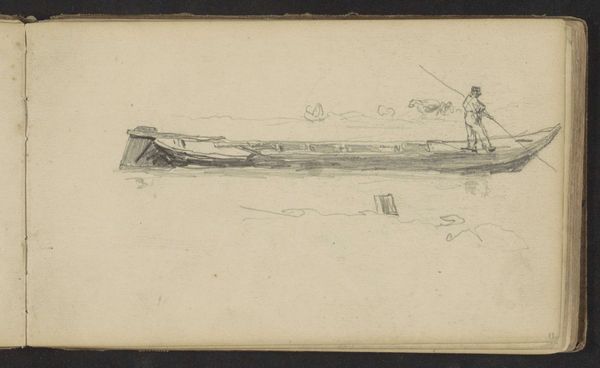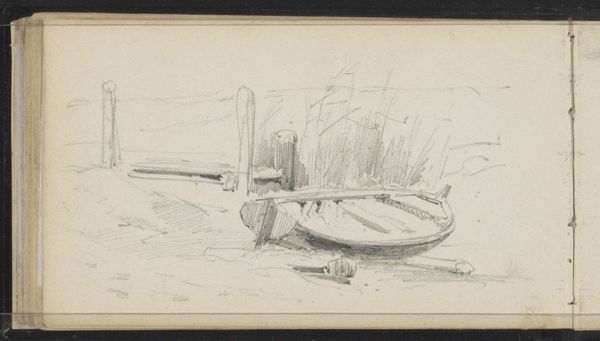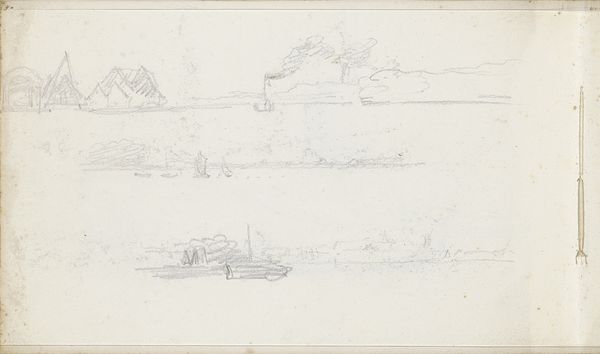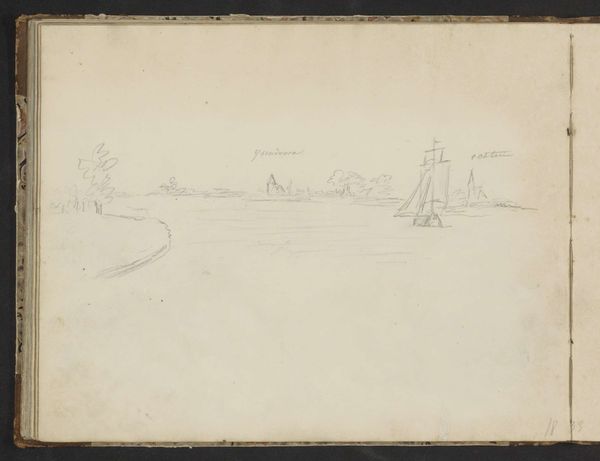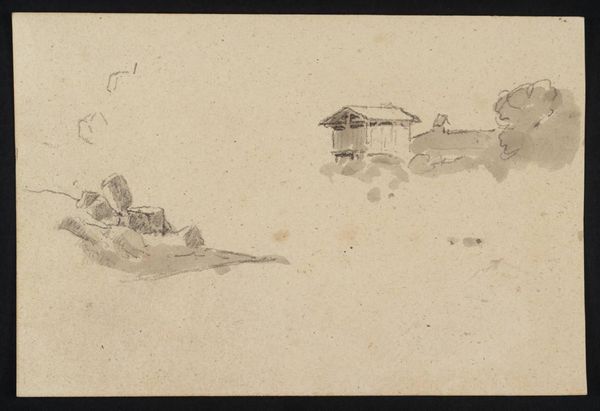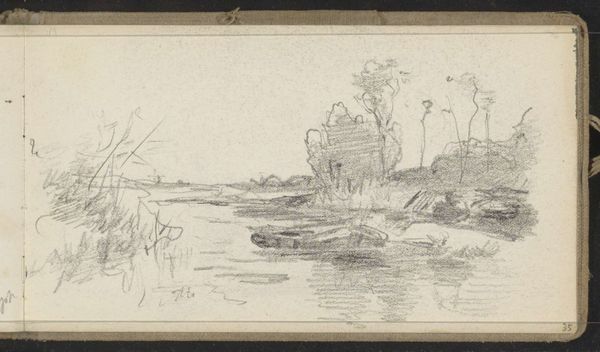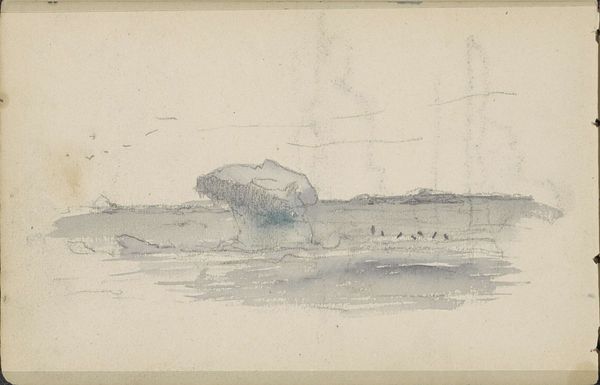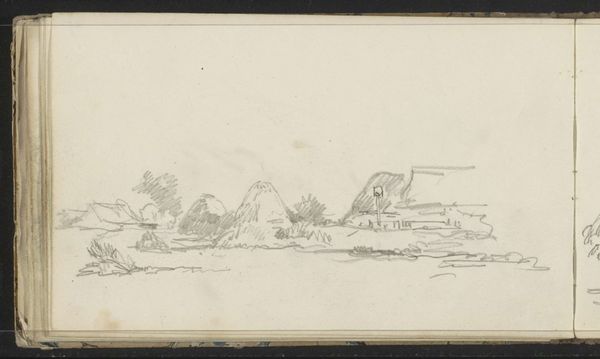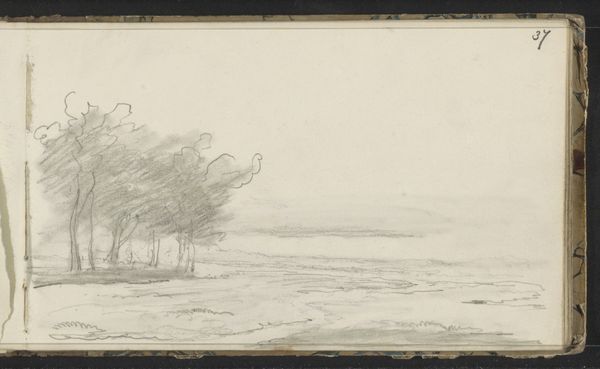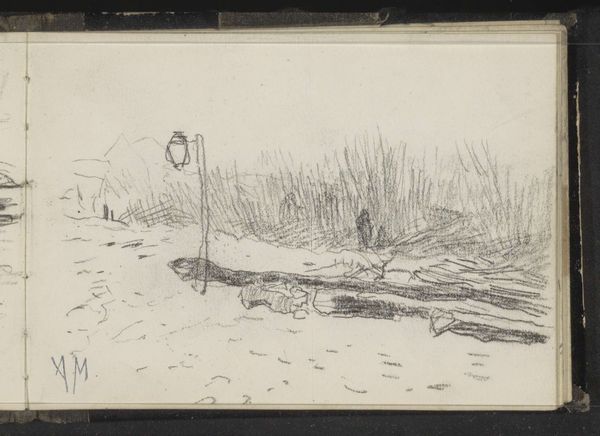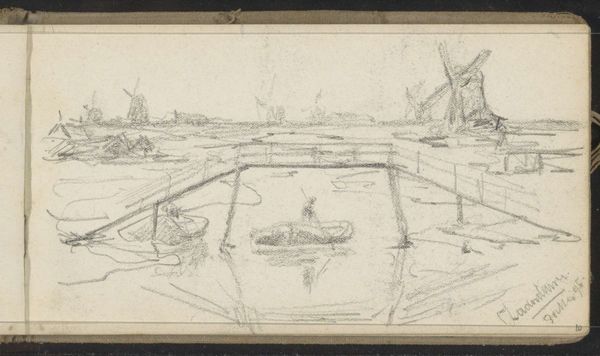
Dimensions: height 104 mm, width 179 mm
Copyright: Rijks Museum: Open Domain
Editor: Here we have "Farmhouse on a Waterfront" created in 1895 by Willem Cornelis Rip, a pencil drawing that almost feels like a whisper. What grabs me most is how economical the marks are – such simple materials producing an entire landscape. What can you tell me about it? Curator: I’m interested in the means of production evident in this modest drawing. Notice the immediate, almost disposable nature of pencil on paper. How does this contrast with the traditional, painstakingly rendered landscapes of the time? It’s as though Rip is actively challenging the hierarchy, valuing the sketch, the fleeting moment, and the accessible materials over grand, laboured paintings. Editor: That's a good point! So, it’s not just a simple drawing, but maybe a statement on the value of the immediate experience? Do you think the social context of the late 19th century – with rising industrialisation – plays a role in this artistic choice? Curator: Precisely. The industrial revolution drastically altered the landscape, both physically and socially. Rip's choice of modest materials, combined with this quickly rendered scene, suggests a deliberate commentary on the changing world, perhaps prioritizing the preservation of rural scenes through easily reproducible methods. It also questions the elitism inherent in art production – who gets to create and what materials are considered ‘worthy’? The drawing becomes an act of democratisation, capturing a place that may be transformed beyond recognition soon. Editor: It really opens up my eyes! I always thought about landscape drawings, without thinking about how everyday things and society contribute to the artist's intentions and materials! Curator: The key is to analyze the social conditions, mode of creation, and materials when engaging with artwork. Editor: I'll remember that from now on. Thanks a lot for everything!
Comments
No comments
Be the first to comment and join the conversation on the ultimate creative platform.
